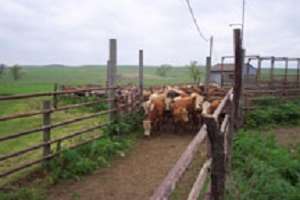By Dr. Tom Noffsinger

Nebraska cattle producer and veterinarian, Dr. Tom Noffsinger, is a leader when it comes in low stress cattle handling. He has a rap sheet to prove it, too, with degrees in Animal Science and Beef Production Management as well as a laundry list of awards and accolades highlighting his breadth of knowledge and achievement. It is his belief that learning, knowing and understanding the behavior of the animals on your farm or ranch is the key to keeping stress levels at a minimum when handling livestock.
Noffsinger says it is exciting to watch the change in attitudes when producers take responsibility for the actions of the cattle in their presence and make the conscious decision to make every interaction with the animals a positive one, for both the cattle and the human.
“Know that whatever the cattle do in our presence, is because of our position, our posture, our movement,” Noffsinger said. “All of a sudden what they do is our responsibility.”
Borrowing from the technique of his cattle handling hero, Bud Williams, Dr. Noffsinger says the tricks of the trade that work, are to get where the cattle can see you - clearly. Then give them clues where you want them to go. Get them use to it, and he says they’ll do the same with you.
“Bud Williams’ dream was to create voluntary activity in cattle,” Noffsinger said. “Match that up with a world full of people that had the expertise, the training, the ability and the freedom to create voluntary motion - it is the most amazing thing I’ve ever witnessed.”
Click here to see more...